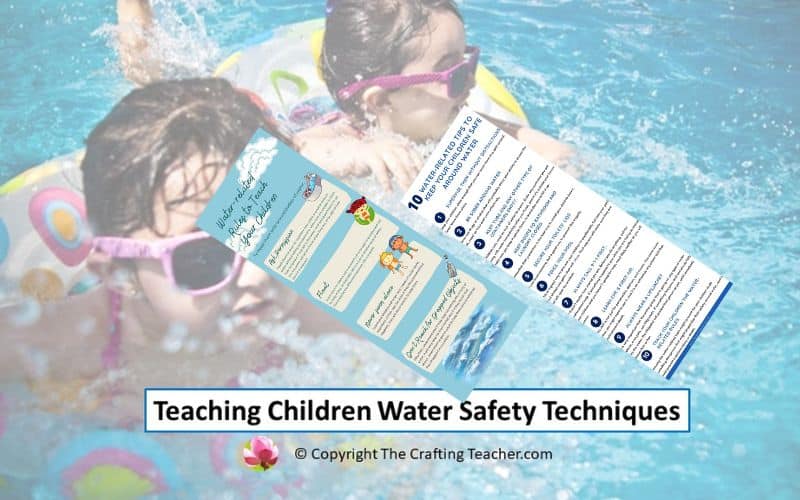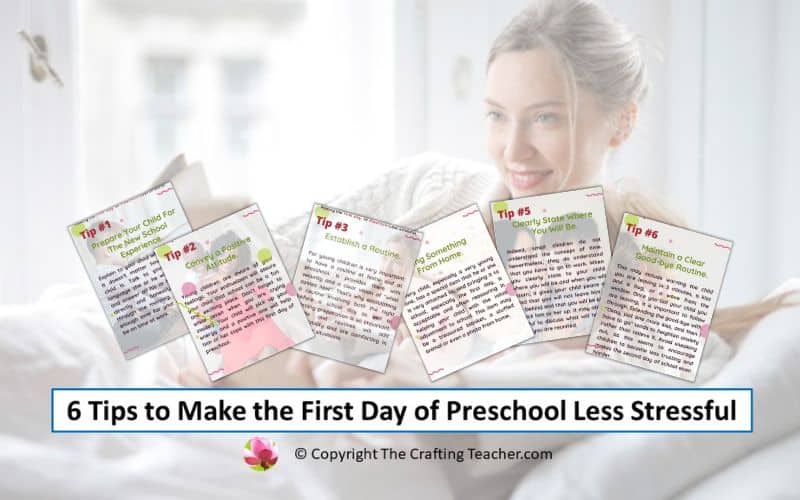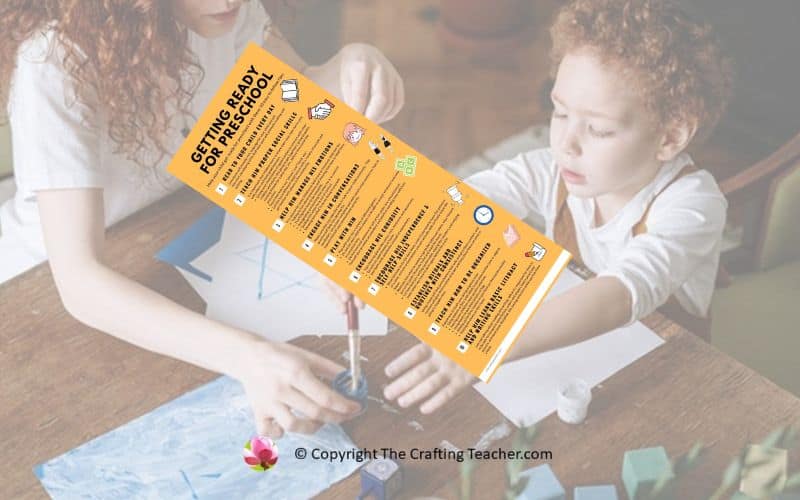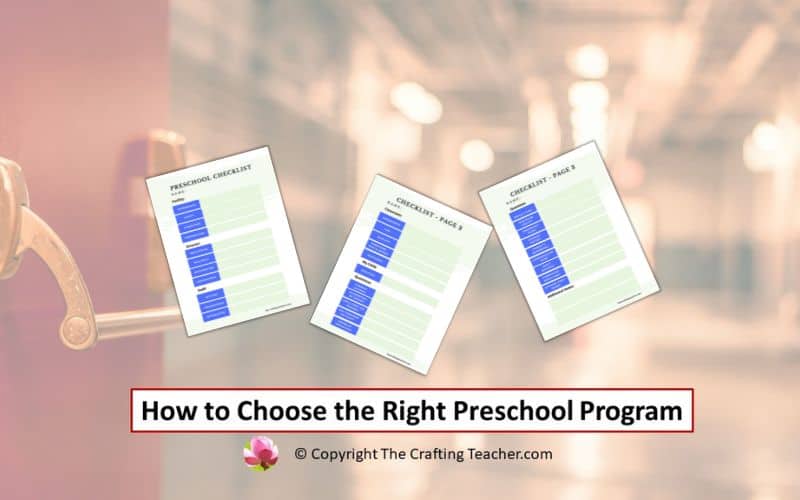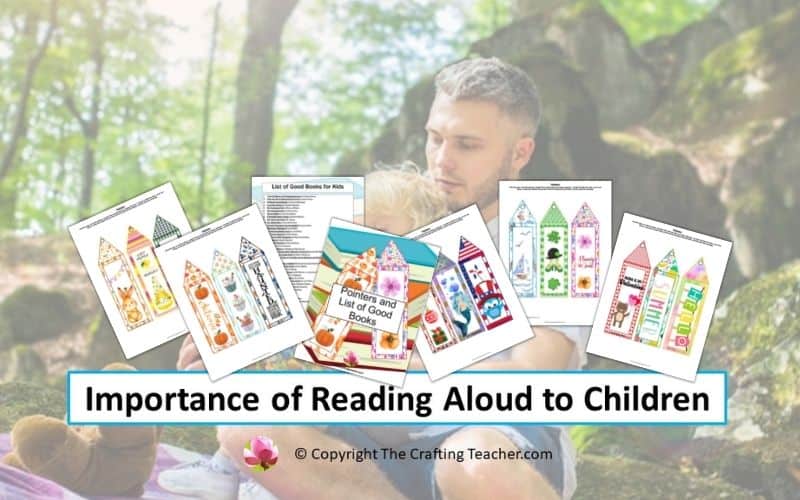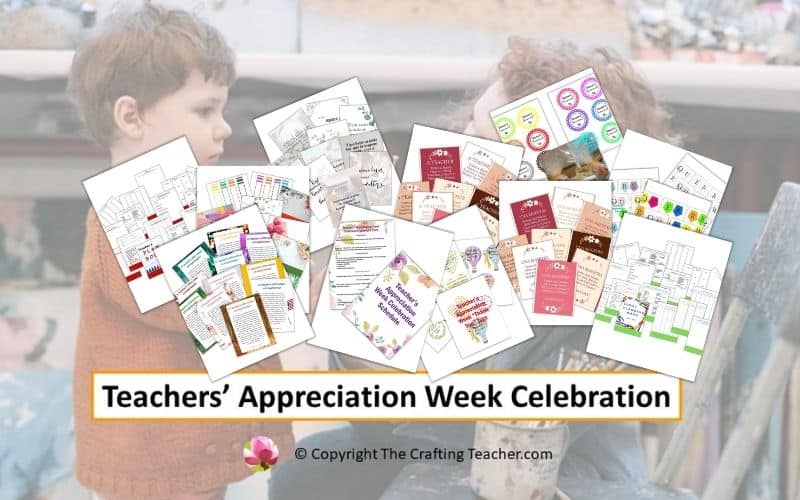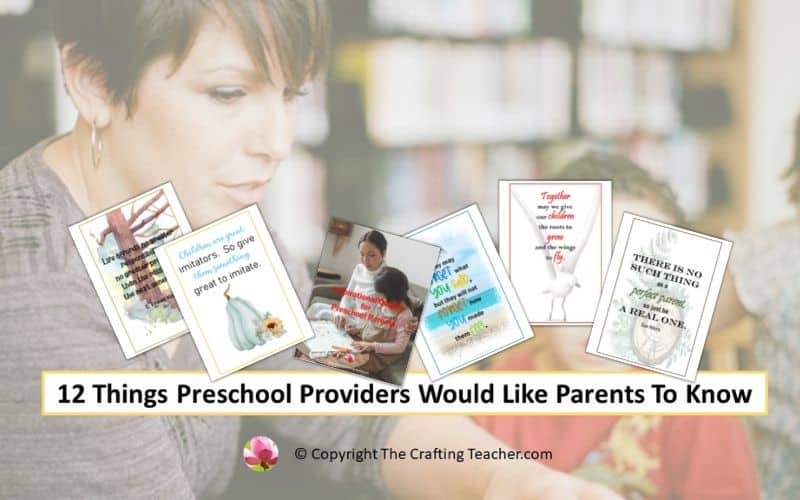Teaching Children Water Safety Techniques
Affiliate Disclosure: “This post contains affiliate links, which means I receive a small commission, at no extra cost to you, if you make a purchase using those links.”
Summer started and with it, children get to enjoy more water activities that they might not be able to enjoy during colder seasons unless they live in places like Florida, where is hot practically all year. Children get to enjoy the water in pools, lakes, rivers, and oceans, but there are other places where they can get in contact with water that is equally dangerous, like your own house, believe it or not.
There was one case at my school recently, where this mom found her two-year-old son with his head inside the toilet, legs in the air, and drowning. It took a second of distraction on her part to almost lose her son.
Scary Facts About Drowning
- Children younger than 1-year-old are most likely to drown at home in the toilet, a bucket, or the bathtub. It just takes an inch of water for this to happen.
- The leading cause of death among 1 to 4 years old children is drowning.
- Drowning is in third place of causing death amount 19 years old and under.
Importance of Teaching Your Children Water Safety
Accidents happen, I know that, but taking important precautions to try to avoid this helps. That’s the reason why it is so important to teach your children about water safety rules and how to swim since they are toddlers.
The more knowledge they have, the less likely they will have a water-related injury or drown if they accidentally fall into a pool or another type of body of water.
There are some basic water-related rules that you should teach your children from a very early age. These rules should be constantly reminded to your children and practiced, to make sure they understand and remember if something happens.
Rules to teach your children about water safety:
- Ask permission. Children need to understand that they cannot go anyway near a pool or another body of water without asking permission first. Talk to your children regardless of how old they are. Make sure you explain to them how dangerous it is to fall into the water, and how important is for them to ask permission to go into the water.
- Float. It is extremely important for your children to learn this skill. If a child accidentally falls into a pool, having the ability to roll over and float to be able to breathe and call for help could means the difference between life and death.
- Never swim alone. It is very important to teach your children not to go near a body of water alone, regardless of their age, because if they do and something happens, they will have nobody to help them.
- Don’t reach for dropped objects. Your children need to understand that if they drop something into a body of water, it will be very easy for them to fall into it if they try to reach that object. Teach them to get an adult to help them rescue whatever they dropped if it’s possible.
I’ve created an infographic with these rules thinking that it might be a good idea to have it handy to remind your children of these rules, constantly, and avoid a tragedy. It is completely free, and you can get it by just clicking on the link below.
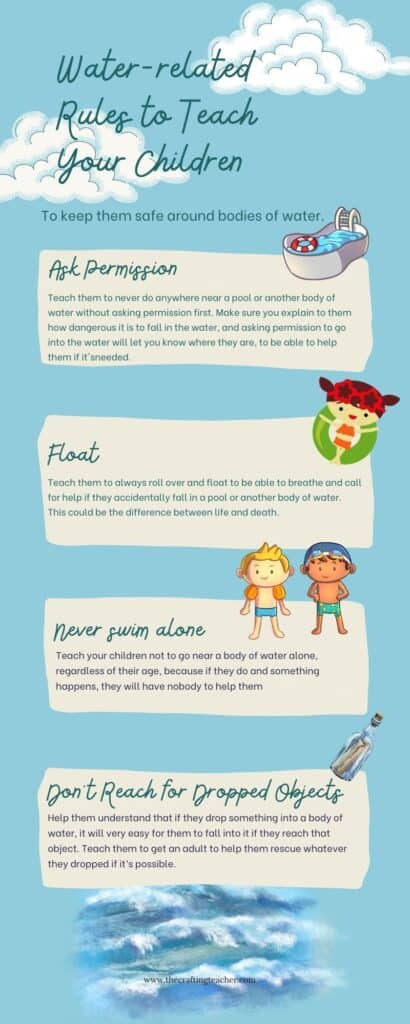
10 Top Water-Related Tips to Keep Your Children Safe
I am sure that you are aware of the dangers that children face around bodies of water. I am also pretty confident that you have thought about every possible way to protect your children, but sometimes even the best parents (or adults for that matter), get distracted or tired or anything else and we might forget about some of the things we have to take into consideration to protect our children around pools, lakes, rivers, or any other type of body of water, and I would like to help you remember some of the most important tips you have to take into consideration.
Tips to Keep Your Children Safe:
Tip #1 – Supervise your children without distractions. Keep your children close enough that you can reach them in a split second. Never leave them alone.
Tip #2 – Be sober around water. Never use drugs or alcohol that will probably delay your ability to assess the risk, react on time and swim effectively.
Tip #3. Keep tubs and any other types of containers empty. As I said before, children only need an inch of water to drown. Drain any container you are using with water immediately after you finish, and if it’s outside your house, make sure you keep it upside down, to avoid the rain filling it up.
Tip #4 – Keep the door to your bathroom and laundry rooms closed. Remember that prevention is the best way to avoid your child to drown.
Tip # 5 – Secure your toilet’s lid. Remember what I told you about the mother at my center? She installed safety guards on her toilets after her son almost drown. It’s an inconvenience I know, but it’s also a good way to prevent a tragedy.
Tip #6 – Fence your pool. This is a great way to prevent your children from accidentally falling into your pool, and always use gates that self-close. That way you will make sure they are not left open by accident.
Tip # 7 – Always call 9-1-1 first. It doesn’t matter how scared you are. Before you do anything, call for professional help. If something happens to you while you are trying to rescue your children and you haven’t called for help, most likely neither of you will survive.
Tip #8 – Learn CPR and First Aid. This skill is not just for paramedics, doctors, and nurses. All of my staff and I take this training every two years. You never know when you might need to use it, and it is an extremely important skill that could prevent death.
Tip #9 – Always wear a life jacket. It is very important that the entire group going on any type of water vehicle, even pets, use lifejackets. If something happens and somebody falls into the water, the lifejacket will protect that person or pet, until somebody rescues him or her.
Tip #10 – Teach your children the water-related rules. Knowing the water-related tools might prevent for your children to do something dangerous that might jeopardize their safety around water, and it could prevent a serious injury or death.
I put these tips together in this infographic, to keep them handy for you. It is completely FREE and you can grab it by clicking on the link below.
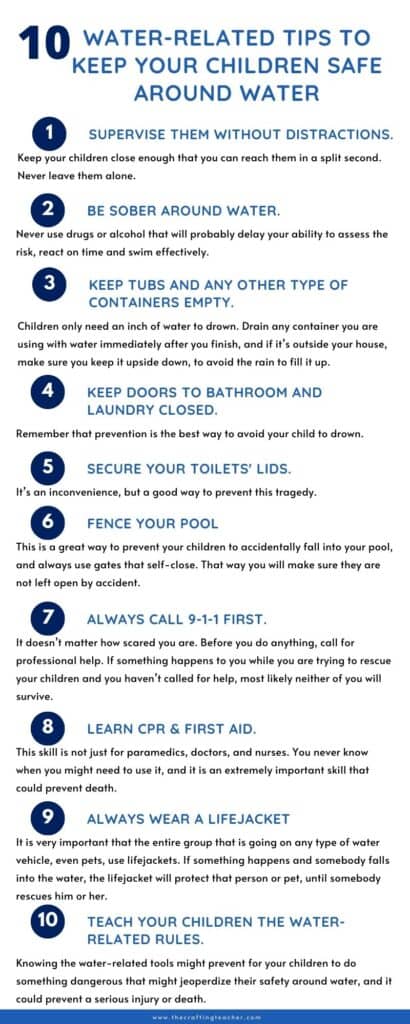
Regardless of how well you teach your children water safety, you should always remember that supervising your children around water (including your bathtub and toilet) is the best way you can prevent a tragedy.
I hope these rules and tips help. Enjoy the water this summer, but always remember to be aware of the dangers.
Be happy, safe, and creative. I wish you well.
Love,

P.S. If you would like to see an article about how to make something specific, please let me know and I will try my best to write it for you. My goal is to help you in any way I can and I don’t like anything better than to post something that you might find useful.

